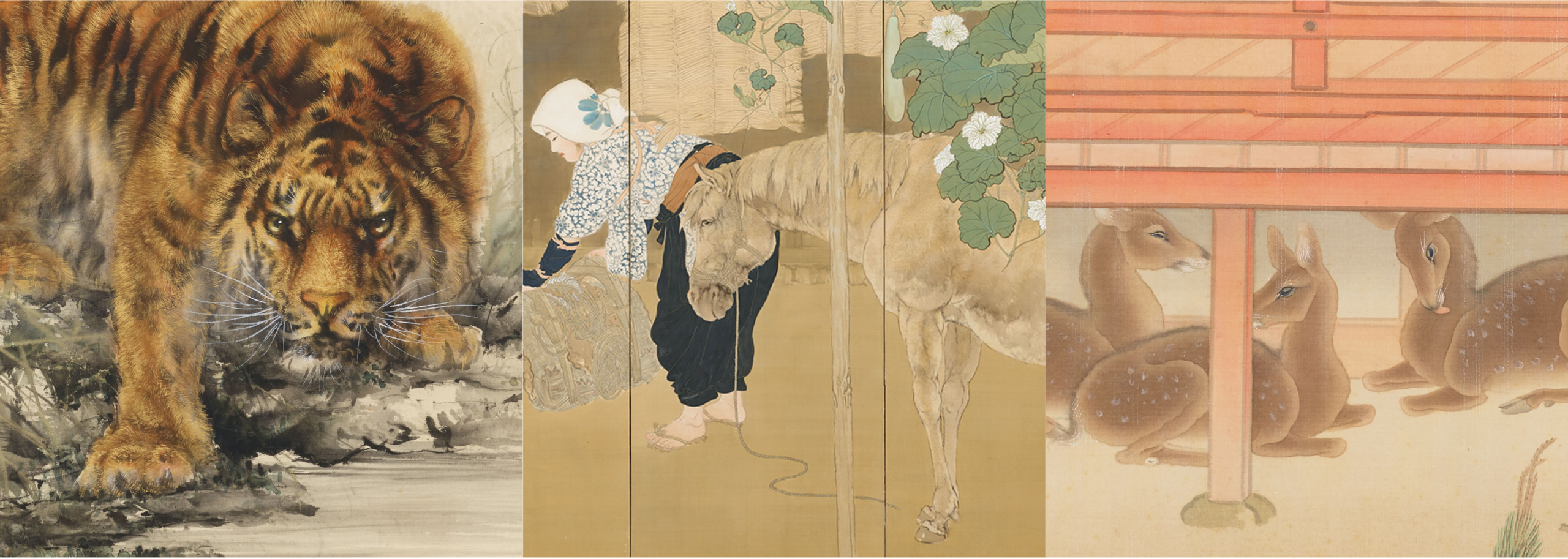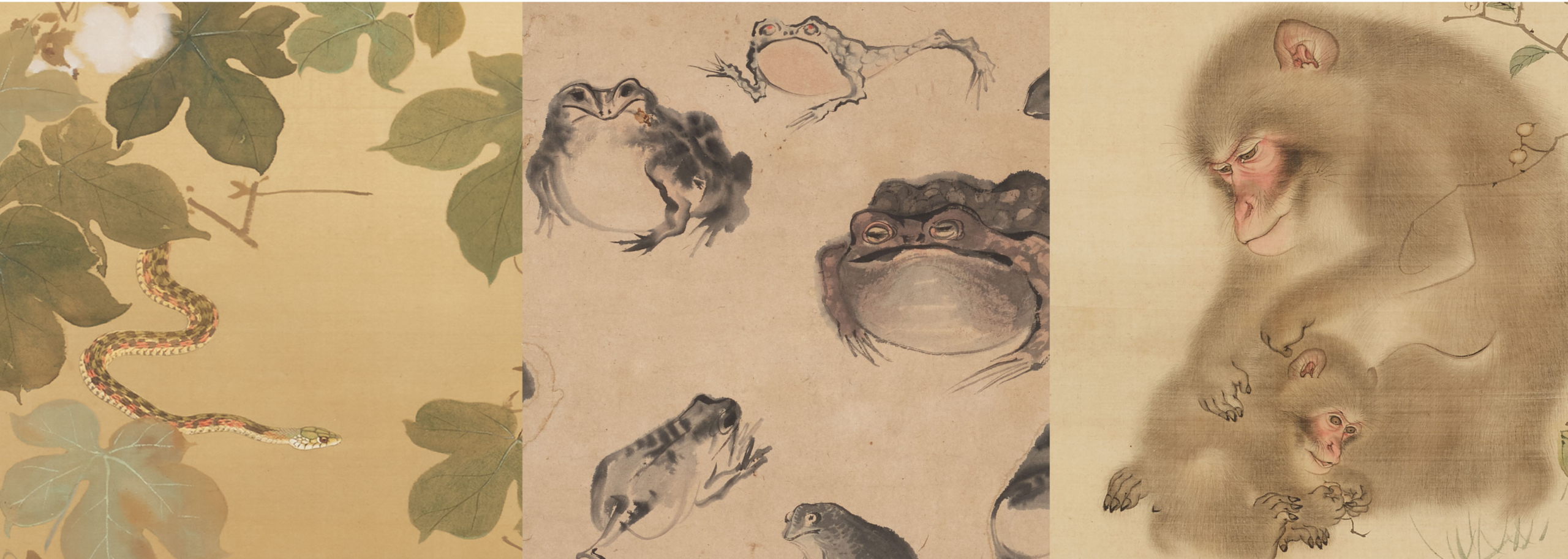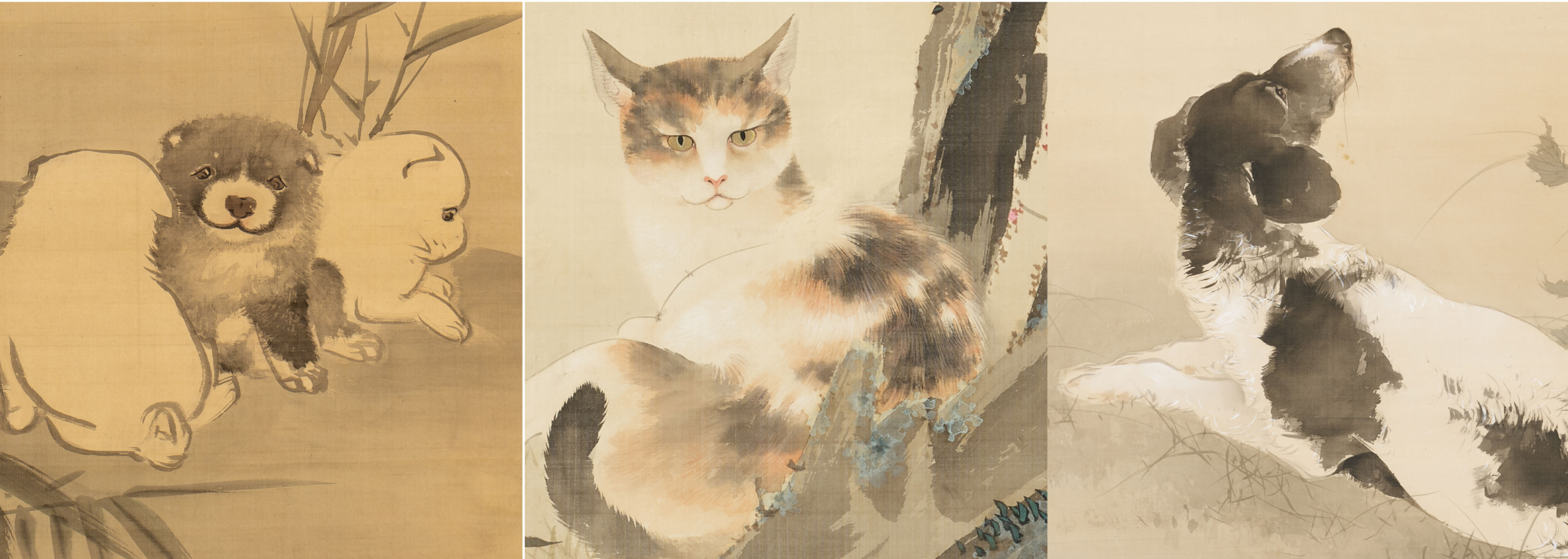Fukuda Animals on Parade
This summer, will animals on parade on the Fukuda Art Museum, Saga Arashiyama, Kyoto?
Before the early modern period, animals were sometimes favourably depicted as objects of worship, with special powers, or as congratulatory symbols , such as longevity and prosperity of offspring, sometimes as meaningful beings. From the Edo period (1603 – 1868) onwards, painters such as Maruyama Ōkyo and Itō Jakuchū began to observe animals closely, sketch them and depict them in a more realistic manner.
This exhibition introduces the animals depicted by Japanese painters from 17th to 21st century, from such early modern painters to Konoshima Ōkoku, Hayami Gyoshū and Kayama Matazō, together with explanations of the meaning and ecology behind the animals.
The exhibition also draws attention to the keen eye for detail, the detailed drawing of hair and the refined colours, not to mention the differences in expression between the different artists.
Section 1. Fierce Beasts and Working Animals

First comes the carnivore zone, where you can almost hear the menacing breath of pacing predators. Wonder at the big cats realistically rendered by the Ōhashi brothers, Banpō and Suiseki, specialists in tigers. Next comes a more peaceful zone showing oxen, horses, and other working animals. Used for transportation and plowing, pack and draft animals were once vital to daily life. After this, you come to the highlands of Japan where you can see deer, wild boar, and other wild animals that are part of the local landscape. Here, the animals and natural settings are distinctively expressed by different artists. Along with the many animals, enjoy varied artistic styles.
Section 2. Sleek, Slithery, Cuddly!

In the zone of small animals, in pictures of bats, crabs, snakes, and so on, you first view mammals, crustaceans, and reptiles. Then, in the monkey zone, enjoy sensitive renderings of Japanese macaques, which often populate monkey mountains in zoos. In nearby Arashiyama Monkey Park, you may have even seen them roaming freely on an actual mountainside. There are also other cute animals such as rabbits and squirrels. Be amazed at the painters’ skill in rendering sleek skin, sinuous movement, and fluffy fur.
Section 3. Shaggy Dogs, Fluffy Cats: Cute Pet Corner

Dogs and cats are common household pets. As pet owners, artists have closely observed the behavior and form of their animals, and so have portrayed many varied breeds of dog and cat. The appeal of puppies, the dignity of large dogs, the elegant preening of cats have all inspired the artists to capture their charm. In the second half of the exhibition, you can see one of Japan’s important cultural properties, Watanabe Kazan’s The High Gate of Lord Yu, in which several dogs figure in the scene.
You can check the highlight of this exhibition on Google Arts & Culture.
Exhibition Overview
| Title | Fukuda Animals on Parade |
|---|---|
| List of Works | List of works (English) |
| Dates |
July 13 (Sat.) – October 1 (Tue.) 2024 1st period: July 13 (Sat.) – August 26 (Mon.) 2024 |
| Opening Hours | 10:00〜17:00 (last entry 16:30) |
| Closed |
August 27 (Tue.) for changing the exhibition |
| Venue |
Fukuda Art Museum : 3-16 Susukinobabachō Saga-Tenryuji, Ukyō-ku, Kyoto |
| Entry Fee |
General / University student: ¥1,500 (¥1,400) * Prices in parentheses are for groups of 20 or more. <Combo Tickets with Saga Arashiyama Museum of Arts & Culture> *If you purchase an online ticket of the Fukuda Art Museum, you will get a discount for the entry fee of the Saga Arashiyama Museum of Arts & Culture. Therefore, you can enter both museums as the same price of the combo ticket. |
| Supported by |
Kyoto Prefecture, Kyoto City, Kyoto City Board of Education |
